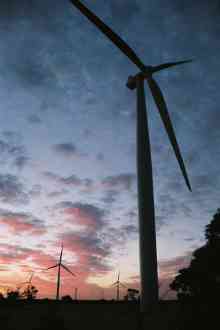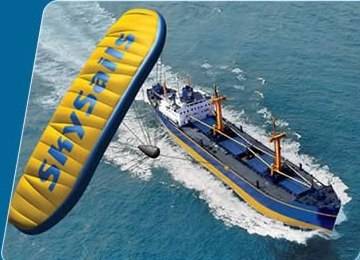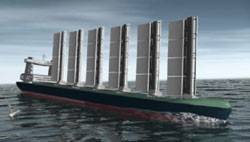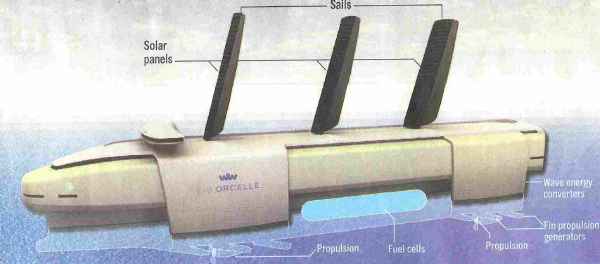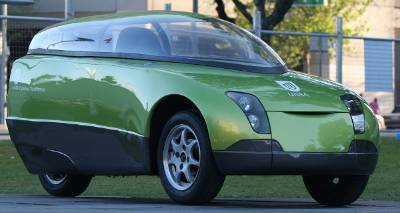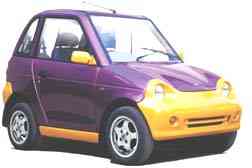|
Introduction
The greenhouse gasses that are released into the atmosphere by human activities are causing climate change. A major proportion of the greenhouse gas carbon dioxide (CO2) comes from fossil fuel (coal and petroleum) fired power stations, and the other main source is the petroleum fuelled transportation that we use. This page is primarily concerned with transport, but since one of the proposed fuels that I have considered for that transport is electricity, power generation methods must be considered. Another page, Sustainable electricity, discusses that.No level playing field
In Australia and the USA the fossil fuel industry has the backing of government. Both major political parties in both countries receive big money in political donations from big business, and in return they look after big business. The fossil fuel industry is allowed to dump its waste, carbon dioxide, into the atmosphere at no cost to the industry, but at great cost to the Earth. This is discussed more fully in my notes on No level playing field on another page. A sustainable energy based transport system will have a hard time against the entrenched and government supported fossil fuel based transport system. The petroleum fuelled car industry and the coal industry in particular have a lot of weight with government in Australia and the USA.Australian governments are slow to act on sustainable transport because of the power of the entrenched unsustainable transport industry. Private enterprise might, in the end, be the primary mover toward a sustainable transport system. Those businesses run by people with foresight will see the opportunities presented by sustainability compared with the dead ends implicit in non-sustainable systems.
Hydrogen
What viable alternative fuel is there for powering our transport? A major contender is hydrogen, but there are a number of problems that need to be fixed before the hydrogen powered transport system becomes viable.- How will we generate the hydrogen at a reasonable cost and without producing greenhouse gasses?
- How will we move the hydrogen from where it is produced to where it is needed to refuel our vehicles? (There are technical difficulties with piping hydrogen.)
- How will we safely store a reasonable amount of hydrogen in our vehicles? (Currently available systems for storing hydrogen are much heavier than is the hydrogen itself.)
- Hydrogen is notoriously hard to confine, highly flammable, burns with an invisible flame, and makes steel containers brittle.
- Will fuel cells ever be economically viable?
Ethanol
Ethanol can be produced and burned without a net increase to atmospheric CO2 by making it from such crops as sugar cane. It is not the answer to land transport because there is not enough crop land on Earth to grow that much sugar. However, it could be viable if it was confined to those uses that demand a high power to weight ratio, such as air transport.Ethanol and methanol can also be produced from wood.
Cut back on energy use?
To drastically cut back on transport and, at the same time, maintain our life-style is not an option either. While cutting back would help, and should be done, our life-style would collapse if we were to suddenly abandon the abundant transport at reasonable cost that we have come to depend on.|
|
|
A sustainable electrically powered transport system
Electrically powered transport is looking like the front runner for post fossil fuel road transport. Long distance transport should be by electric train, shorter distance by battery-electric vehicles, recharged from the electricity grid. The electricity supply must be powered by renewable energy.Shipping is problematical, perhaps wind powered shipping (discussed below) will be at least the medium term answer.
There are currently problems with a battery electric powered road transport system:
- Existing electric vehicles have short ranges;
- Recharging electric vehicles from the power grid results in CO2 being released into the atmosphere from the power stations;
- Renewable energy generation methods such as wind are variable and are not suitable for running an entire electricity grid;
- A prototype electric vehicle developed by the University of South Australia has been shown to have a range of 150km between charges. It is also feasible to use a system of battery replacement rather than battery recharging for longer journies. As of late 2008 a proposal has been made for such a system in eastern Australia; the company will own the batteries, car owners pay a fee to use them, replacing them as needed from numerous stations.
- If the electricity going into the grid is generated by sustainable means then the generation of greenhouse gas is no longer a problem.
- The way that the electrical grid is operated can be modified so that consumption matches generation. Indeed, the batteries of the electic cars can become a part of this balancing; this is discussed in Sustainable energy: storing electricity.
|
|
Matching electrical consumption to generation
Variable price electricity - supply happens when buyer and seller agree on a price
Methods of sustainably generating electricity, eg. wind, have the disadvantage of being variable in time. The answer to this problem is to modify the way the electricity grid is operated so that consumption varies to match the variable generation.Vary the retail price of electricity at any moment according to supply and demand and allow consumers to decide the price that they are willing to pay. Supply would only happen when the instantaneous selling price was below the consumer's agreed buying price. The price would be transmitted over the power lines by an AM or FM signal and appliances would be switched on and off automatically. The variable pricing will cause a close linkage between the variable rate of generation and the rate of consumption.
In periods of high generation and low demand the asking price of power would drop causing more consumption. In periods of lower generation and higher demand the asking price would rise.
The owner of an electric car would set his charger depending on how anxious he was to recharge his car. If he was in a hurry he would have to be prepared to pay a fairly high price for his power. If he was willing to wait, say overnight, he could set his charger to not switch on until the price fell to a low level. The charger would only run when the price dropped below the preset value.
The battery charging systems could also be set up to allow the car owners to profit from selling power from their car battery when power in the grid was at premium prices.
Other systems such as water heaters would use the same principle.
More detail is given on my Internet page devoted to this subject.
|
|
Wind energy
|
Wind farms could make a major contribution to providing the energy needed to run a post fossil fuel transport system.
Wind turbines are presently (2005) the most cost effective form of sustainable electricity generation. Wind generated electricity capacity in Australia has increased by something like 70% per annum in the period 2000 to 2004. In South Australia it could easily grow to the point of supplying all of the electricity needed in low demand periods in a very few years.The main factor holding back the growth of wind energy in Australia is lack of government support, especially from the federal government, and lack of a level playing field. However, it is true that capital expenditure in the distribution system will be needed, and changes to the way the electrical supply system is run to match electrical consumption to generation will be needed if the wind industry is to grow much more in Australia.
More detail on wind energy is given on
my page on that subject.
|
|
Geothermal energy
Geothermal energy from hot dry rocks could provide a 100% reliable base-load electricity supply for a post fossil fuel transport system in Australia.
There are two main types of geothermal energy. The only proven method as of 2005 is that which uses natural steam that is captured and used to run turbines in volcanic areas. See my notes on this method in Pros and Cons of various methods of generating electricity.A second method that is being trialled now in Australia and elsewhere is 'hot dry rocks'. Here water is pumped through a well to depths of up to 5km into exceptionally hot rocks, up to 250 degrees Celsius, and returned to the surface via another well. The water absorbs the heat from the rocks, changes to steam, and drives turbines to generate electricity. An internet site you could visit to learn more is Geodynamics.
Geothermal energy would be advantaged by the introduction of a level playing field in the electrical generation industry.
More can be found in
Wikipedia.
|
|
Solar energy
Solar energy has a part to play in a post fossil fuel transport system
There are two main types of solar energy. Thermal and photovoltaic.
Solar thermal
Various methods collect the heat of sun light and put it to use. Unfortunately no solar thermal method has found wide use as of 2005. See my notes on this method in Pros and Cons of various methods of generating electricity.
Solar photovoltaic
Here sunlight shining of panels is directly converted into electricity. The major disadvantage is the capital cost of the panels.Solar photovoltaics are used on the solar cars in races such as the Darwin to Adelaide World Solar Challenge. They may prove to be viable as a way of supplementing the power from the batteries of electric cars, or for recharging electric cars.
Solar photovoltaics are certainly viable in places remote from the electricity grid. However, their economical viability in competition to other forms of sustainable energy is questionable.
See my notes on this method in Pros and Cons of various methods of generating electricity.
Solar energy would be advantaged by the introduction of a level playing field in the electrical generation industry.
More can be found in
Wikipedia.
|
|
Electrification of rail
Electric rail could provide the long-distance land transport for a post fossil fuel transport system
Diesel powered rail transport has a sustainability advantage over road transport in that it is more energy efficient. More tonnes can be moved over a given distance on a litre of diesel by rail than by road transport. This is mainly due to the smaller rolling friction of a steel wheel on a steel rail compared to a rubber tyre on a bitumen road. The greater size and weight of a typical train also gives an advantage in reduced air resistance, per tonne, compared to road.However, diesel powered rail is not sustainable, it uses fossil fuel. The way to make rail transport sustainable is to electrify the railways and produce the electricity by sustainable means. You could see my notes on sustainable electrical generating methods in Pros and Cons of various methods of generating electricity.
More can be found in
Wikipedia.
Sailing ships?
| ||||
|
Innovative modern sailing ships might be able to provide sea transport in a post fossil fuel transport system
What fuel can we use to replace bunkering oil for ships? There do not seem to be any obvious contenders on the horizon.Going 'back' to sail is an obvious possibility, but how practical is it? There have been proposals for modern sailing ships; some using retractable metal aerofoils instead of the traditional cloth sails which require so much manual labour to raise and lower.
Engineers from the Hamburg company SkySails have tested the potential of high-tech kites for pulling a ship. (Top picture on right. See SkySails)
And a team of naval architects in Copenhagen has been working on a 50 000-tonne cargo ship with aerofoil sails on six masts. (Bottom picture on right. See New Scientist)
Both these proposals would keep the conventional ship's engines, the sails
would only be a supplementary source of power. With the rising cost of fuel
these proposals are suggested to be viable from an economic point of view
at present.
|
|
Electric ships?
|
Small boats powered by solar photovoltaic panels have been used successfully. I'm not sure of my ground here, but I believe that this scales-up favourably for large ships because the resistance to movement through the water increases at a lower rate than the length of a ship increases. Ie. At a given speed the wave making resistance is less than directly proportional to the length. Also, the mass of a ship, and therefore its profitable load, is proportional to the cube of its length while the wetted surface is proportional to only the square of the length. In a few words this means that larger ships, tonne for tonne, require less power than smaller ships and large solar powered ships, I believe, should be able to travel at higher speeds than small solar powered boats.
